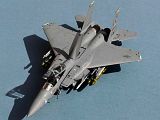McDonnell Douglas (Boeing) F-
48th Fighter Wing (Liberty Wing), USAFE
RAF Lakenheath, deployed to Middle East 2018
Academy 1/72 with Two Bobs Decals (72–109).
© www.gengriz.co.uk
The McDonnell Douglas (now Boeing) F- USAF in 1976.
USAF in 1976.
Designed originally as a pure air superiority fighter, it ranks amongst the most
successful of modern fighters, with 104 air to air kills for zero losses. Designed
to overcome the shortfalls demonstrated by F-
Despite the widely publicised original F-
The USAF 48th Fighter Wing operates the F-
“The Liberty Wing led the El Dorado Canyon raids into Libya in 1986 and was the first
F-
(Copied from the RAF Lakenheath web page)
Building the Academy Strike Eagle Kit:
Having decided I wanted to build an F-
I've always liked Academy kits, which seem to be generally well engineered with good fit and good detail. Even their early kits, which could often be described as FROG copies, were definitely FROG upgrades by the time they hit the streets. Decals are perhaps not their strongest point, indeed I don't think I have ever used Academy supplied decals (mainly because they were not a scheme I wanted to use) and this kit will be no different. The kit comes with markings for an aircraft of the 461st TFTS, 405th Training Wing at Luke AFB, Arizona, but I wanted to do a "local" UK RAF Lakenheath based aircraft, so I acquired a rather nice set of Two Bobs decals via Hannants for the USAF 494th Expeditionary Air Wing during their 2018 deployment to the Middle East to fight against ISIS.
Building an Eagle so closely after my Super Hornet allowed some interesting engineering
comparisons in regards of both the real thing and the model. The Super Bug seems
to have all manner of aerodynamic oddities such as the very large LERX and appears
to be a much thinner aircraft. The Eagle by comparison seems bulky, but has a very
slick and apparently simple aerodynamic configuration. Of course, none of this is
absolutely correct; both aircraft are sophisticated designs, but have taken a somewhat
different approach. The Eagle's rear fuselage is much thinner in the vertical plane
but from the rear it looks much less bulky than the Hornet. It is interesting to
note that the Eagle was essentially a clean sheet design, whereas the Hornet still
shows some of its F-
In a similar vein, Academy's approach to the complex fuselage shape is similar to the Italeri Hornet, but perhaps not as well formed, although I did find it easier to work out which part would touch what (and thus where to apply glue). Academy's cockpit is better, or at least its ejector seats are, even if they do have no attempt at representing seat belts. The seats come as 4 separate parts (squab, sides and back). As usual I left these out until late in the build. Unfortunately the horizontally joined fuselage halves were not a comfortable fit, with the rear locating pins refusing to fit (leaving a gap that needed filler) and a small step remaining along the side of the forward fuselage halves. Full marks to Academy though for reminding me at exactly the right time to add weight to the nose cone. How often have I forgotten that ! Marks deducted though as the nose cone has nothing to indicate its correct orientation. Its fairly obvious what should be top and what should be bottom, but the less experienced modeller could get this wrong, or not entirely right.
Academy provide alternative parts for the intakes and the jet nozzles. These are
clearly marked in the instructions, but unfortunately it doesn't tell you why there
are alternatives and which are appropriate; the two sets of intake nozzles actually
allow the intake to be in either the raised or lowered position (and both are very
fiddly to assemble). The simple jet nozzles are NOT appropriate for a more recent
USAF F-
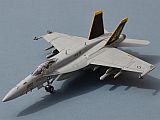
More US Air Force models on my Friends & Allies US Aircraft Pages
A few shots of F-
Background: An F-
Part 2
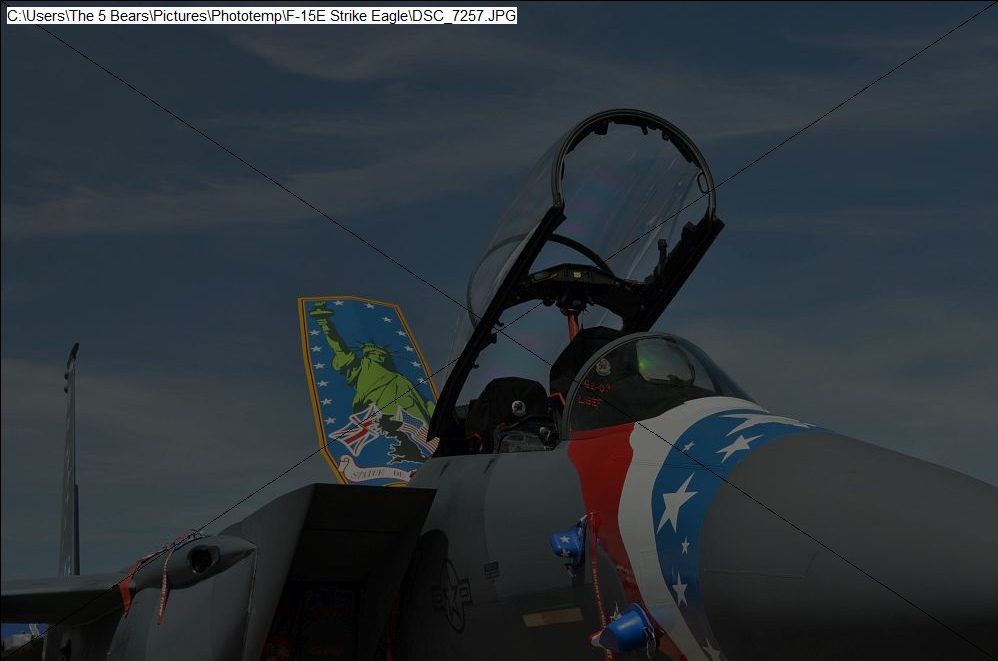
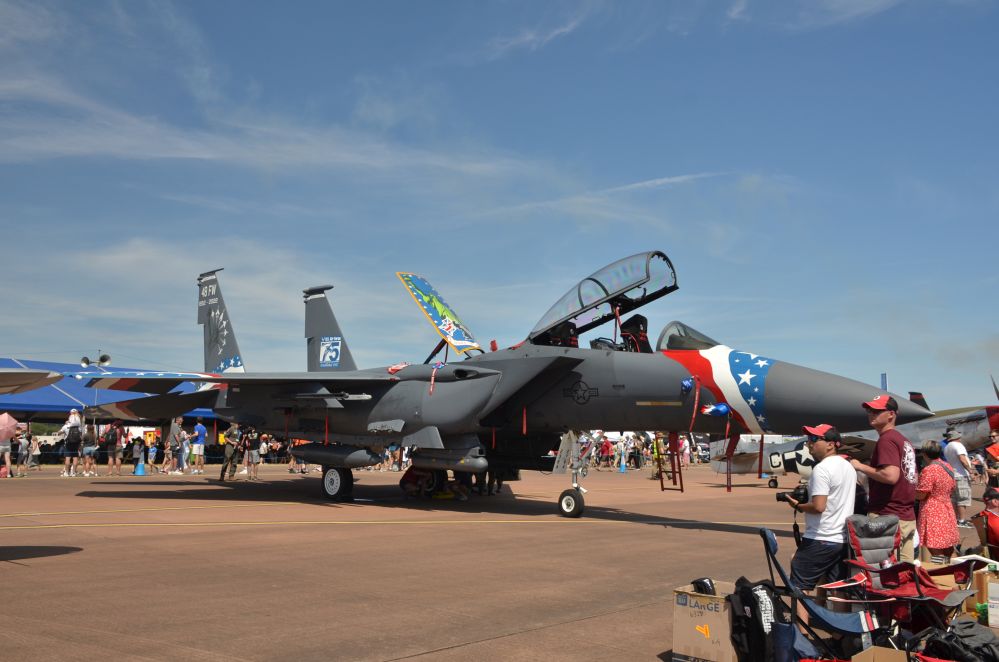
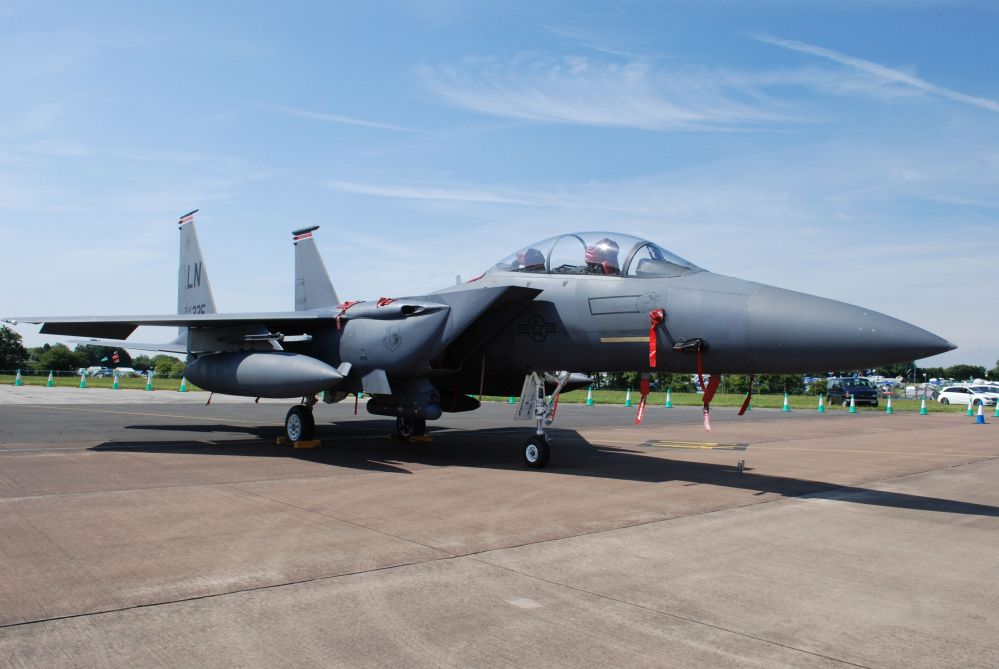
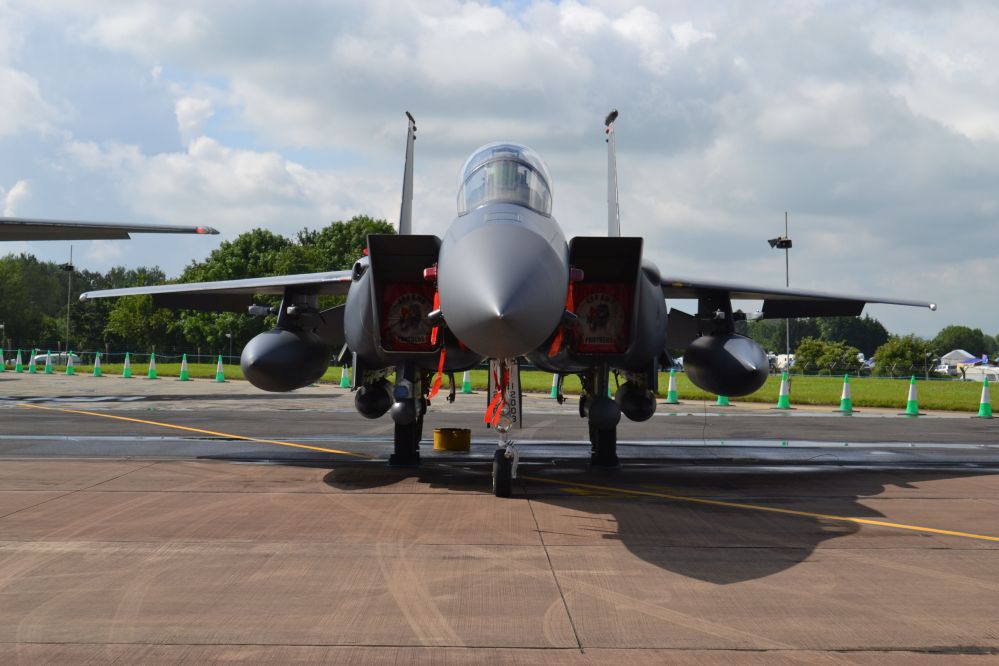
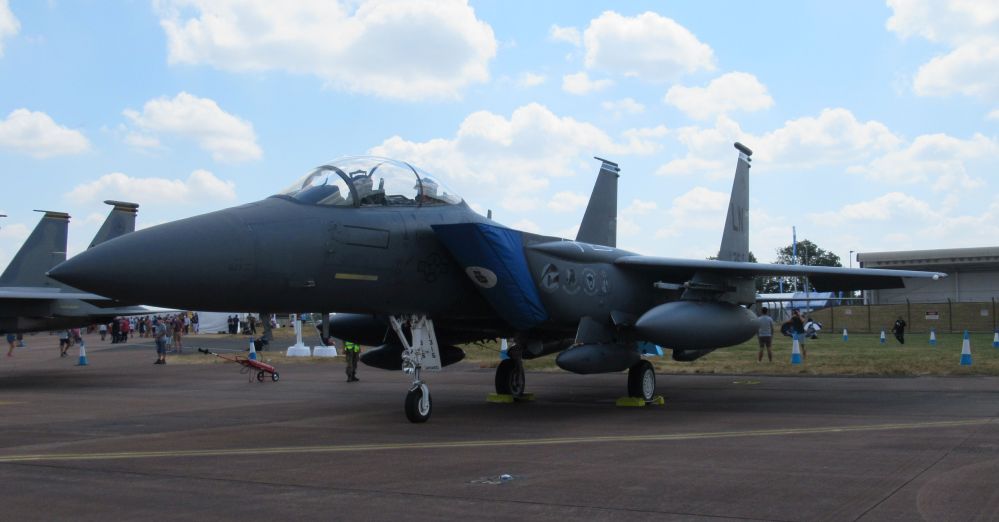
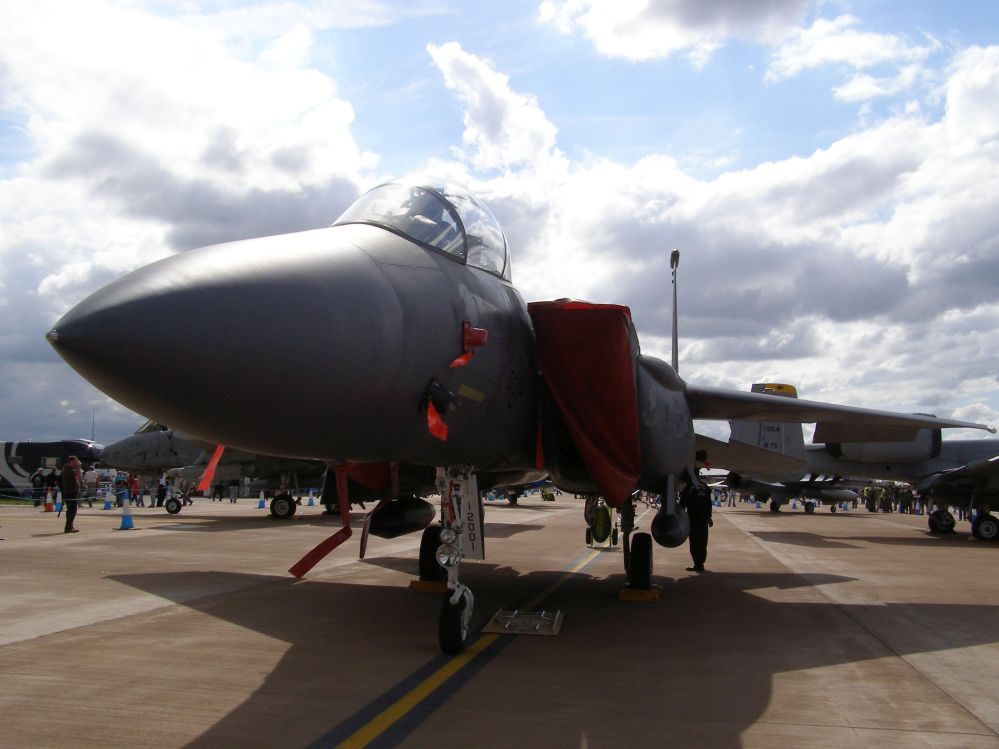
I needed some filler around the intakes, the horizontal nose seam and the horizontal seam beneath the tail planes. As these represent almost all of the visible seams, I would have to say that fit on this kit is not great. It’s not disastrous, but I had hoped for better given the otherwise precise moulding of the kit detail.
In fact I seem to have many more problems building this kit than I would have expected,
given my experience and Academy's normal standards. The wing pylons were somewhat
vague in their construction, with the large MER-
The weaponry provided with this kit is most impressive, in its detailed moulding
and its quantity. It is, perhaps, a shame that it doesn't include the more typical
current smart weapons used in, say, Syria or Iraq against ISIS. Nevertheless, you
will still have an impressive stash of weapons for other builds regardless of how
you arm this one. Marks deducted though for no mention of opening the holes in the
lower fuselage for the LANTIRN AN/AAQ-
Academy provide decals for the instrument panels and of course, these don’t fit well.
As well as being too wide, they don’t sit over the protruding throttle levers, so
a little trimming is essential. It's really not the best cockpit interior I've seen,
but I will concede that the 4-
Painting was accomplished using my usual thinned Humbrol enamel, applied by brush, with Satin 125 acting as the Gunship Grey (Gray?) main fuselage colour and others mixed to taste.
The Two Bobs decals are very nicely presented, with two large colour sheets showing
positioning for up to 4 of 15 separate aircraft. After much indecision, I went for
the Wing Commander’s aircraft, AF91 311 “Lady Liberty”, with its image of the Statue
of Liberty and the Twin Towers. I also mixed in a few of the kit’s own decals, although
these had a worrying tendency to curl up. The decals were applied over a wet coat
of Johnson’s Klear, followed by a coat of Windsor & Newton Acrylic Matt varnish to
finish. F-
And so another kit joins the collection. I have slightly mixed feelings on this
one; it wasn’t as easy to build as it should have been, but the end result is very
pleasing, definitely worth the effort and makes an interesting comparison with the
F/A-
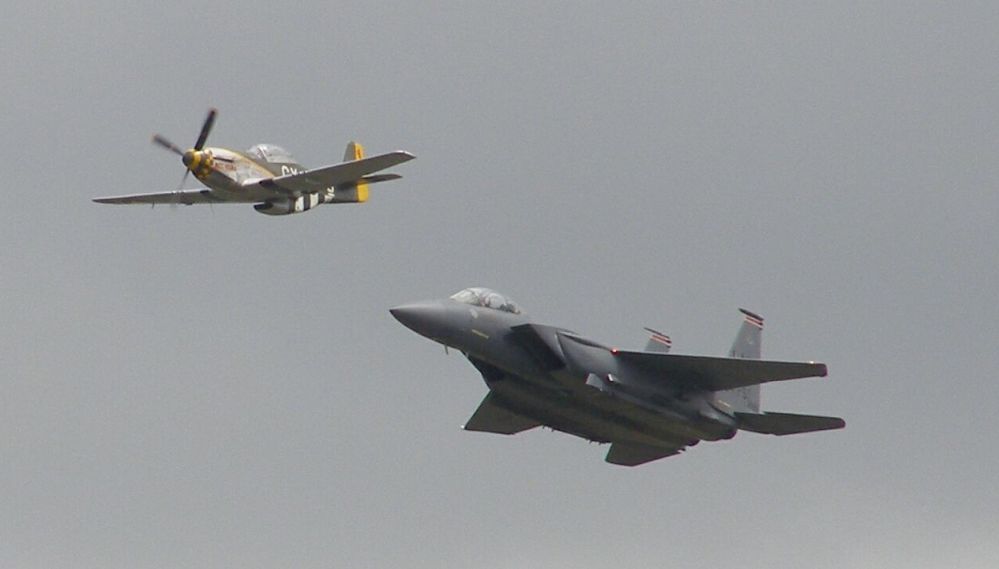
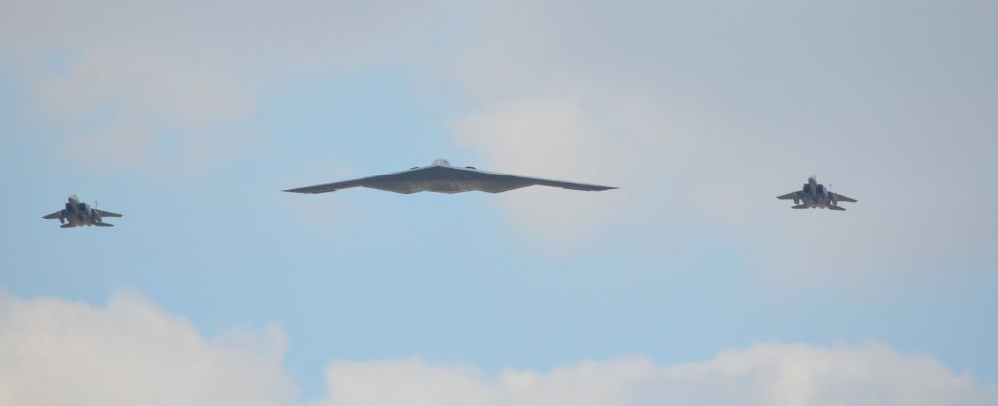
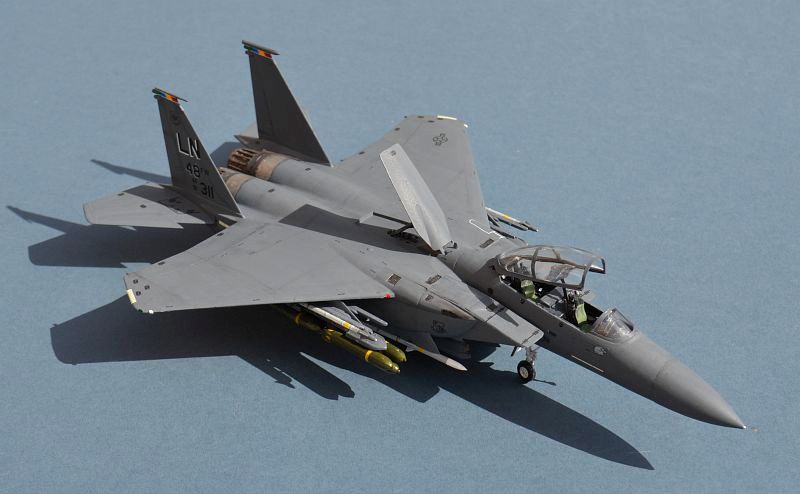
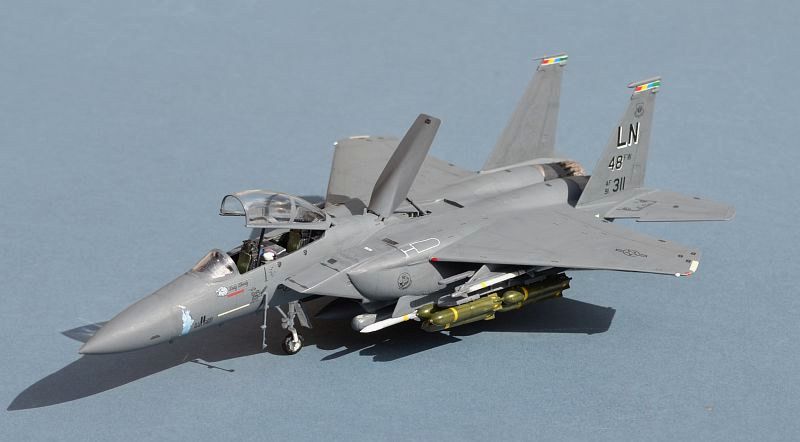
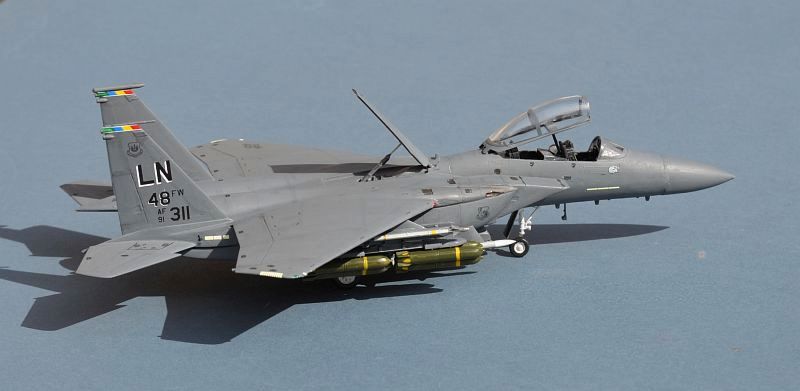
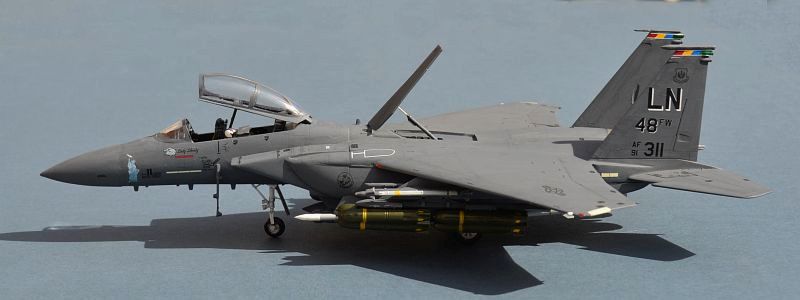

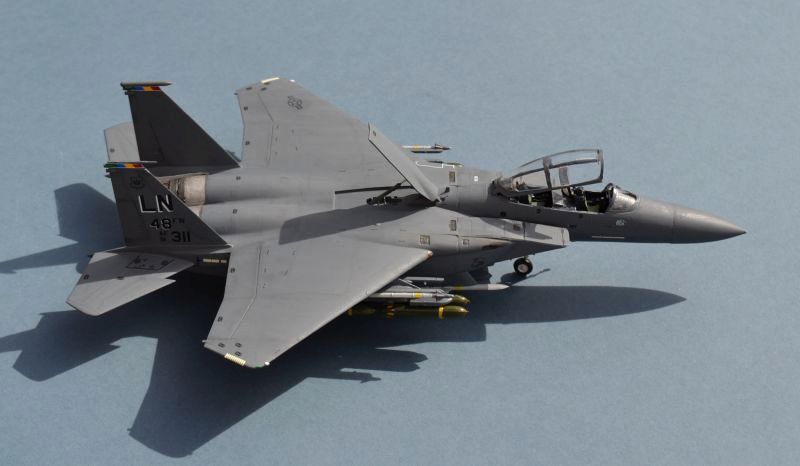
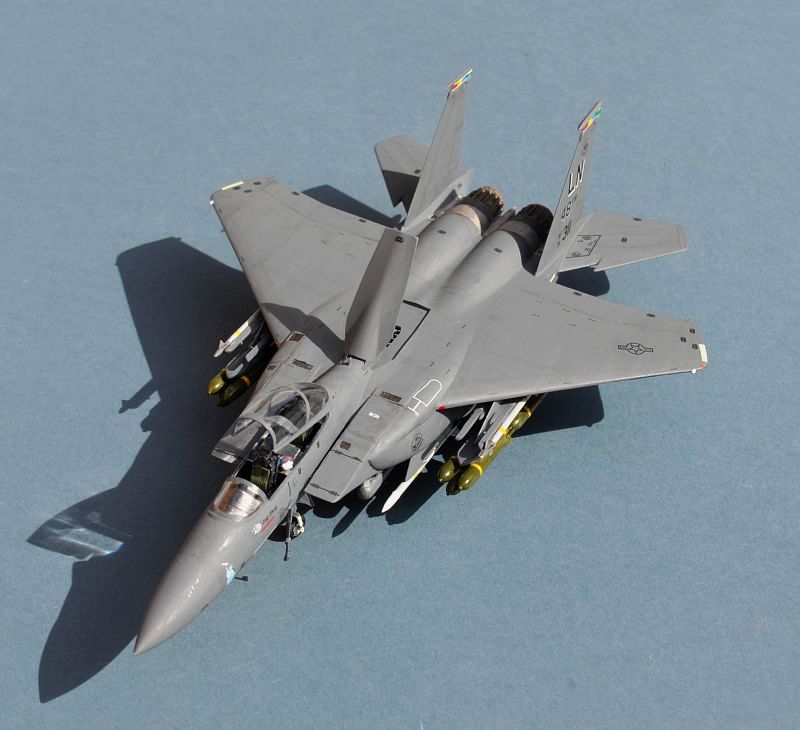

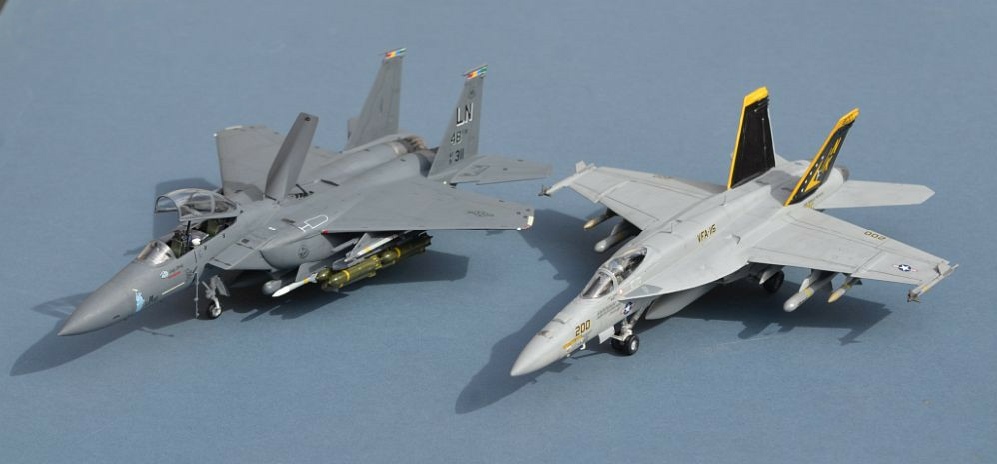
With this month’s other model build, an F/A-
